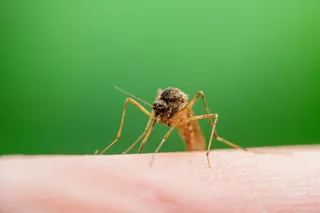HIV is an elusive adversary. The virus is so good at fooling the immune system that the quest for an HIV vaccine, or even a countermeasure to resist infections, has spanned two fruitless decades. But maybe a defence has been lurking in our genomes all this time.
Nitya Venkataraman from the University of Central Florida has managed to reawaken a guardian gene that has been lying dormant in our genomes for 7 million years. These genes, known as retrocyclins, protect monkeys from HIV-like viruses. The hope is that by rousing them from their slumber, they could do the same for us. The technique is several safety tests and clinical trials away from actual use, but it's promising nonetheless.
Retrocyclins are the only circular proteins in our bodies, and are formed from a ring of 18 amino acids. They belong to a group of proteins called defensins that, as their name ...













